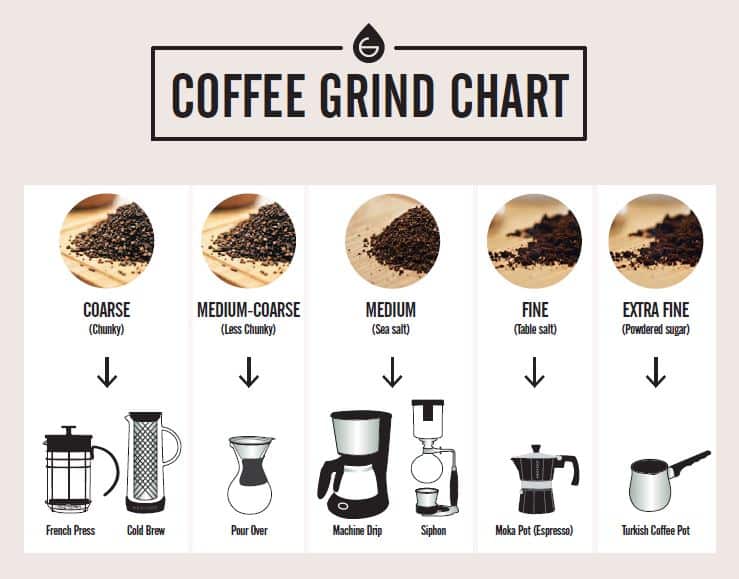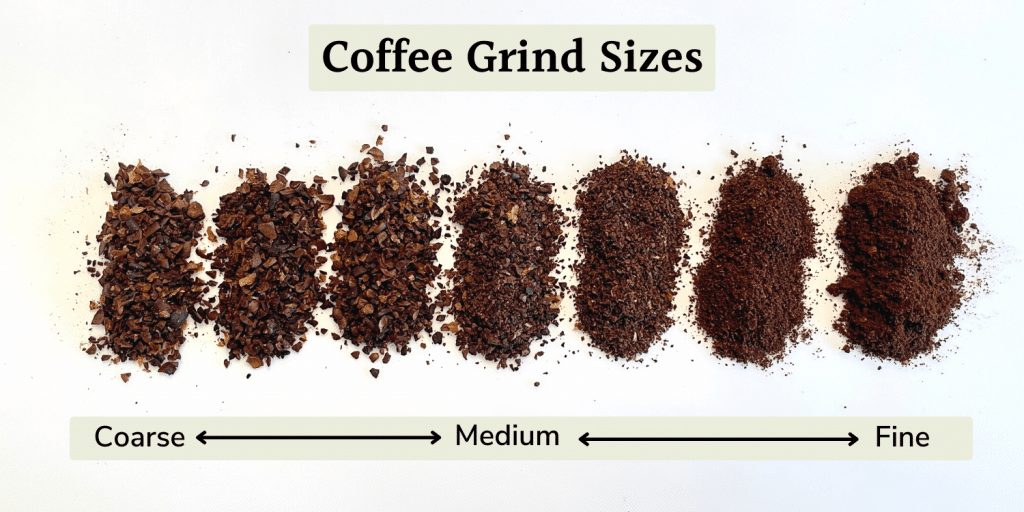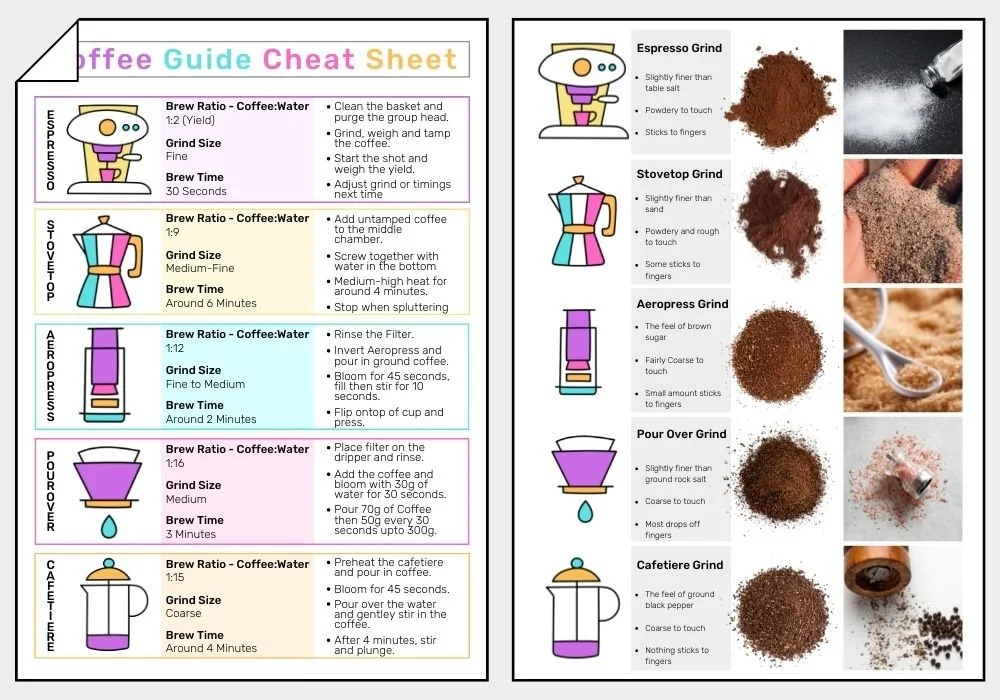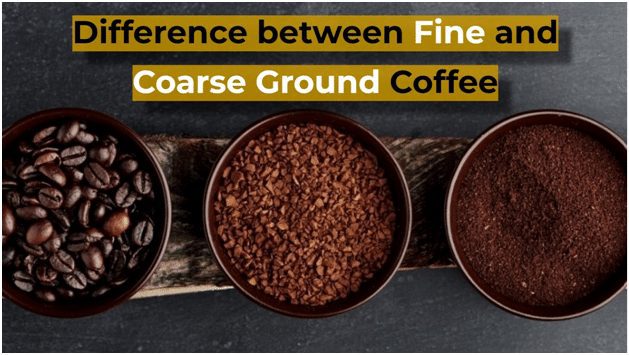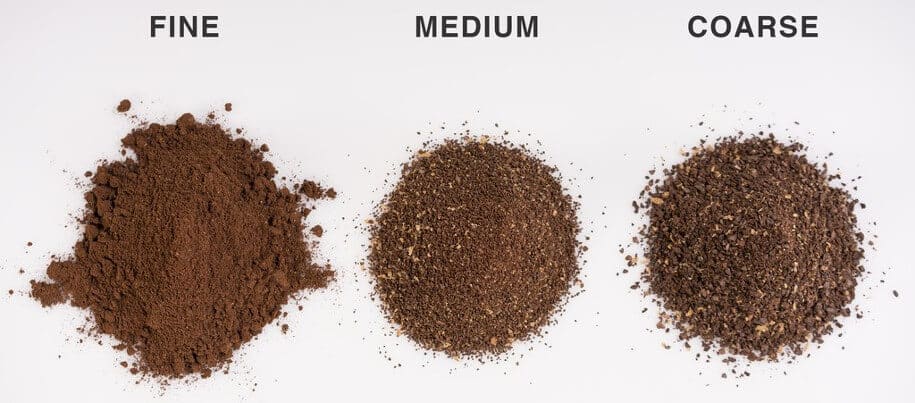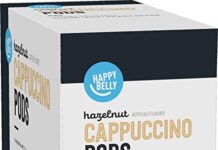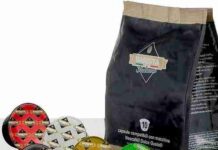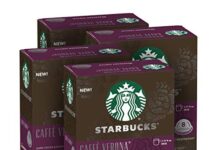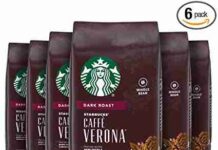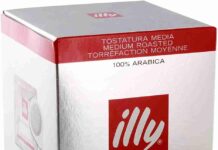Coffee lovers often debate the ideal grind size for the perfect cup of joe.
With arguments ranging from taste and aroma to brewing methods, whether to grind coffee coarse or fine continues to ignite discussions among coffee lovers worldwide.
In this article, we explore this caffeine-fueled controversy and uncover the reasons behind choosing either a coarse or fine grind, shedding light on the impact it has on the overall coffee experience.
So grab your favorite mug and join us on this flavorful journey as we unravel the secrets hidden within the grind.
This image is the property of grosche.ca.
Types of coffee grinders
Blade grinders
Regarding coffee grinders, there are two main types to choose from: blade grinders and burr grinders. Let’s start with blade grinders. These are the most common types of coffee grinders found in many households. Blade grinders use a spinning blade to chop the coffee beans into smaller pieces. However, the resulting coffee grounds can be uneven in size because the blade slices through the beans rather than grinding them.
Burr grinders
On the other hand, burr grinders are known for producing consistent and uniform coffee grounds. These grinders work by crushing the beans between two revolving abrasive surfaces called burrs. The distance between the burrs can be adjusted to achieve different grind sizes. Burr grinders are generally regarded as superior due to their ability to grind the coffee beans finely.
Factors affecting grind size
Brewing method
The grind size of your coffee beans plays a crucial role in determining the flavor and aroma of your brewed coffee. The brewing method you choose will significantly impact the ideal grind size. For example, if you’re using a French press, coarser coffee grounds are recommended to prevent over-extraction and produce a well-balanced cup. Conversely, a fine grind is essential for espresso brewing to achieve the desired extraction within a short brewing time.
Extraction time
The extraction time refers to the duration in which water comes into contact with the coffee grounds during brewing. The grind size directly affects the extraction time. If the grind is too coarse, the water will pass through the grounds too quickly, resulting in under-extracted coffee with weak flavor. On the other hand, if the grind is too fine, the extraction time may be prolonged, leading to over-extracted coffee that tastes bitter.
Water temperature
Water temperature also plays a role in the extraction process. Hot water extracts flavors from coffee more efficiently than cold water. However, different brewing methods require different water temperatures, and the grind size can influence the water temperature needed. With a coarser grind, the water has more room to flow through the coffee, allowing for a longer contact time and a lower water temperature. Contrarily, a finer grind restricts the flow, leading to higher water temperatures and potentially over-extracted coffee.
Coarse grind
Recommended brewing methods
Coarse grind coffee is generally preferred for brewing methods like French press, cold brew, and percolators. These methods involve longer extraction times, and the more enormous coffee grounds allow for proper extraction and a fuller-bodied cup of coffee. The coarse grind ensures the water and coffee have enough time to interact, resulting in a robust and well-balanced brew.
Advantages
One of the advantages of using a coarse grind for brewing is the reduced risk of over-extraction. The more enormous coffee grounds provide a slower and more controlled extraction, preventing the coffee from becoming bitter or overpowering in flavor. Additionally, the coarse grind allows for easy sediment removal when using a French press, ensuring a cleaner cup of coffee.
Disadvantages
Despite its advantages, coarse-grind coffee does have some drawbacks. For one, the coarseness of the grind can lead to uneven extraction. The larger particles may release their flavor too quickly, while the smaller ones may not have enough time to extract fully.
This can result in a less consistent flavor profile. Furthermore, coarse-ground coffee won’t produce the desired results with methods like pour-over or espresso that require a finer grind.
Fine grind
Recommended brewing methods
A fine grind is necessary for brewing methods like espresso and Aeropress. These methods rely on quick extraction and require a smaller grind size to achieve optimal results. The fine grind allows a higher surface area of the coffee grounds to come into contact with the hot water, ensuring a rich and flavorful espresso shot.
Advantages
One of the main advantages of using a fine grind is the increased extraction efficiency. The smaller coffee particles provide a larger surface area for the water to extract flavors, resulting in a more concentrated and intense cup of coffee. Fine-grind coffee is also essential for achieving the desired crema in espresso, giving it a luxurious and smooth texture.
Disadvantages
Using a fine grind for brewing can come with its challenges. The main disadvantage is the risk of over-extraction. The water can pass through the coffee too slowly with a finer grind, causing an extended extraction time.
This can result in a bitter and overly strong brew. Additionally, some methods, such as French press or cold brew, are incompatible with fine-grind coffee due to the required prolonged extraction time.
This image is the property of craftcoffeespot.com.
Flavor extraction
Coarse grind
The flavor extraction process is gentler and less intense when using a coarse grind. The more enormous coffee grounds allow for a slower extraction, which can result in a smoother and less acidic flavor profile. This is particularly noticeable in methods like French press and cold brew, where the extended contact time helps to extract the subtler flavors from the coffee beans.
Fine grind
In contrast, a fine grind enhances the flavor extraction process. The smaller coffee particles allow for a more rapid extraction, resulting in a bolder and more robust flavor profile. This is especially evident in espresso brewing, where the high pressure and short extraction time maximize the flavor extraction potential of the finely ground coffee.
Aroma
Coarse grind
Coarse grind coffee tends to produce a more subtle and mellow aroma. The longer extraction time allows for the release of aromatic compounds, creating a pleasant and inviting scent. This can be especially enjoyable when brewing methods like French press or percolators are used, as they allow the aroma to fill the room slowly.
Fine grind
A fine-grind coffee produces a more potent and more concentrated aroma. The smaller particles allow for a quicker release of aromatic compounds, resulting in a more intense and immediate fragrance. This is particularly appreciated when brewing espresso, as the aromatic oils contribute to the overall sensory experience of the drink.
This image is the property of images.squarespace-cdn.com.
Extraction efficiency
Coarse grind
While a coarse grind may take longer to extract flavor, it can still be quite efficient. The more enormous coffee grounds allow for a more thorough extraction, ensuring that the flavors are fully extracted before the brewing process is complete. This makes it a good choice for methods that require longer contact times, such as French press or cold brew.
Fine grind
On the other hand, a fine grind maximizes extraction efficiency. The smaller particles provide a larger surface area for the water to interact with, allowing for a quicker and more complete extraction. This is especially desirable when brewing methods that require a shorter extraction time, like espresso or Aeropress.
Over-extraction and under-extraction
Coarse grind
Using a coarse grind can help minimize the risk of over-extraction. The more enormous coffee grounds slow the extraction process, reducing the chance of extracting undesirable flavors from the beans. However, using a coarse grind for methods that require a shorter brew time, like espresso, can result in under-extraction, leading to an underwhelming and weak cup of coffee.
Fine grind
Conversely, a fine grind carries a higher risk of over-extraction. The smaller particles allow for faster extraction, and if the brewing time is not adequately controlled, the coffee can become bitter and overpowering. When using a fine grind, it is essential to be mindful of the brewing time and water temperature.
This image is the property of kahwati.co.uk.
Grind size and brew time
Coarse grind
Since a coarse grind requires a longer extraction time, the brew time is naturally extended. This can benefit those who enjoy a more leisurely and relaxed coffee brewing experience. Methods like French press or cold brew, which require longer brew times, are well-suited for coarse grind coffee.
Fine grind
In contrast, a fine grind necessitates a shorter brew time due to its rapid extraction properties. This can be advantageous when you are in a hurry and need a quick pick-me-up. Brewing methods like espresso or Aeropress, which rely on short brew times, are perfect for fine-grind coffee.
Summary
In conclusion, the grind size of your coffee beans significantly impacts the flavor, aroma, extraction efficiency, and overall brewing experience.
Coarse grind coffee is recommended for methods like French press and cold brew, offering a robust and full-bodied cup. On the other hand, fine-grind coffee excels in producing bold flavors and is ideal for espresso brewing.
The choice between coarse and fine grind ultimately depends on your preferred brewing method, desired flavor profile, and personal taste preferences.
Experimenting with both grind sizes can discover new nuances in your daily coffee ritual. So, savor the journey and enjoy a freshly brewed cup of delicious coffee, whether you opt for a coarse or fine grind.
This image is the property of knowyourgrinder.com.



